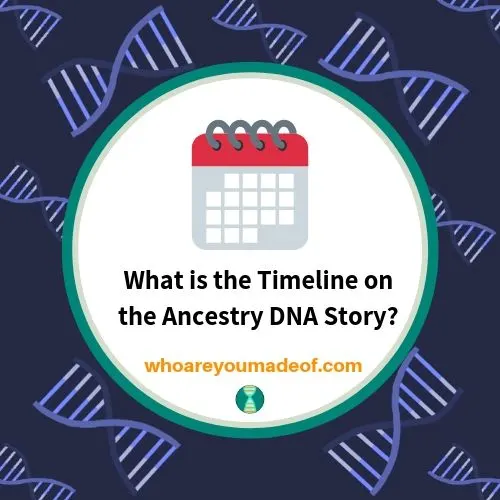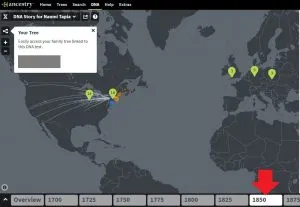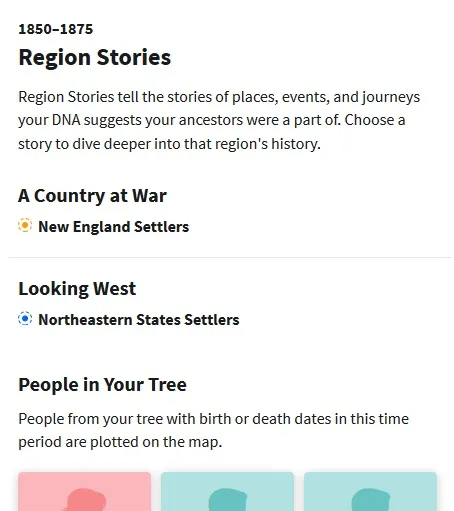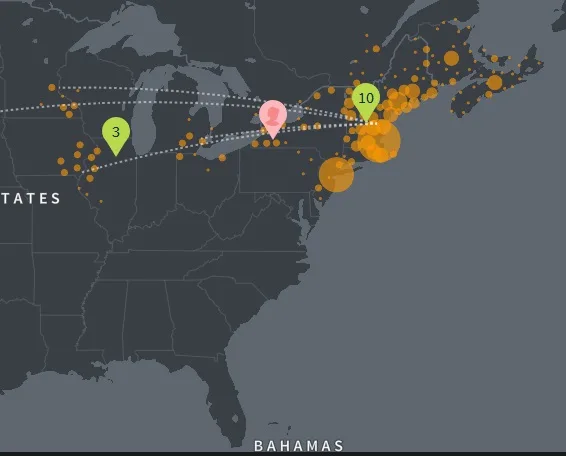Have you seen your DNA Timeline on Ancestry DNA? It can help you get a better understanding of your family's DNA ancestry, and in this post I'll teach you how to understand it.
This post is a sister post to the "What is the Ancestry DNA Story?" post, which will help you learn about all of the features of your DNA Story on Ancestry.

What can you learn from your DNA Timeline on Ancestry?
The Ancestry DNA Timeline can help you learn more about where your ancestors came from and the conditions that may have led them to leave where they were born and migrate to somewhere else.
In addition, your DNA Timeline can help you understand the general migration patterns of other people from the same place via the Region Stories feature. Basically, you can see where other people from the same place as your ancestors ended up living.
What is the DNA Story Timeline?
This is probably the element of the Ancestry DNA Story that the most people miss, which makes me sad because it is probably the most interesting and informative.
In this section, I'll walk you through a few places in my own DNA Story Timeline so you can learn how to get the most from your own. This is my favorite part of the Ancestry DNA ethnicity because you can see people from your tree on the map as well as DNA matches.
(And anyone who reads this website frequently knows that I love DNA matches!)
To use your timeline, the first thing that you should do is select a time period that you are interested in. For this example, I chose the decade of 1850 from my own DNA Story Timeline.
In the image below, you can see where you must click on your screen to choose a time period, indicated by the red arrow:

After I choose the time period (1850's), I will then see "Regional Stories" show up on my DNA Story. These are stories which my DNA indicates likely affected my ancestors.
Region Stories on Ancestry DNA Timeline
Regional stories are not based on your family tree. They are DNA based and include information about known historical periods that may have affected your ancestors.
For the 1850's, I get the following Regional Stories:

I wanted to further investigate the "County at War" story, so I clicked on it and saw a whole lot more information. To the right, I could read a description about the conditions of our country leading, as well as what might have motivated my ancestors to leave New England to move west.
What are the colored dots and numbers on Ancestry DNA Region Stories?
On the map to the left, I see these mysterious lines, colored dots, and numbers. What do they mean?
The colored dots represent the location of ancestors of other members of Ancestry DNA who have the same "community" in their results as you do.
The places with numbers indicate where people who are in your family tree were located. If you don't have a family tree attached to your results, you won't see numbers (so attach your tree for best results).
In the image below, you can see my dots and numbers from my New England Settlers "Country at War" Regional Story. The colors of your dots may be different and will correspond to the Regional Story that shows up in your results.

What are the white lines across the map on the DNA Timeline?
Millions of people have done DNA tests with Ancestry DNA, and many of those people have attached family trees to their DNA results. Since some of these millions of people have ancestry similar to ours, some of them may also have the same Genetic Community (Additional Communities) and Region Stories on their DNA Story.
Ancestry DNA analyzes the family trees of the other Ancestry DNA members who have genetic roots in the same communities to find the migration paths their ancestors took. The white lines represent the trajectory of the family's migration.
It is interesting, and sometimes relevant to our own families, to see where other people from the same communities settled.
Conclusion
I hope that this post has helped you understand all that you can learn from your Ancestry DNA Timeline. It's a great feature that is too often overlooked!
If you have any questions about something that you have read in this post, or if you have learned something interesting about your family from your DNA Timeline, I would love to hear from you in the discussion below.
Thanks for stopping by today!

